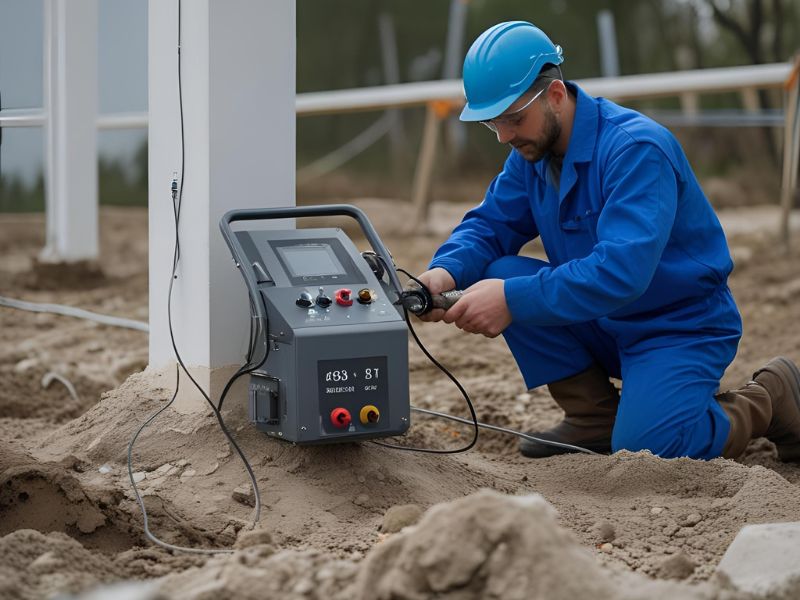
Here's the brutal truth: most people think lightning protection and surge protective device technology are the same thing. They're not. And this confusion costs UK property owners thousands of pounds every year in damaged equipment.
We see it all the time at Lightning Protection Testing UK. Someone calls us after their expensive electronic equipment got fried, thinking their lightning arrester failed. But here's what actually happened: they had protection for their building structure but zero ways to protect electrical systems inside.
So what is the difference between spd and lightning protection? Let me break this down for you.
A lightning protection system is the big, obvious stuff you can see on buildings. We're talking about air terminals (lightning rods), down conductors, and grounding system components. These systems have one job: protect the physical structure from direct lightning strikes.
When lightning hits your building, these systems create a direct path for that massive lightning current to travel safely to the ground. Without them, lightning current would find its own path through your building's structure, potentially causing fires or structural damage.
The UK experiences around 200,000 to 300,000 lightning strikes each year. That's not insignificant. And while we're not exactly a tropical storm zone, British infrastructure isn't always prepared for even mild lightning activity.
External lightning protection works brilliantly for what it's designed to do. But here's the kicker: it does absolutely nothing to protect electrical equipment inside the building.
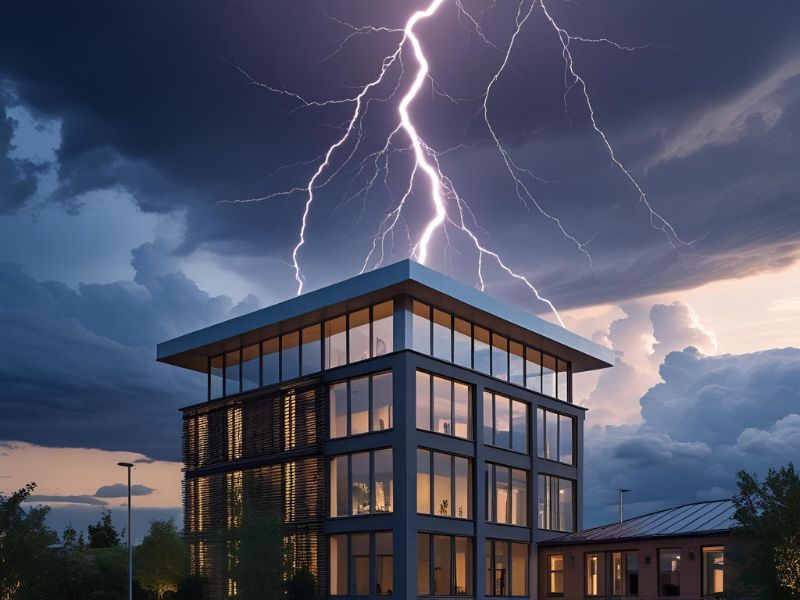
Surge protection devices work completely differently. They're installed inside your electrical installation to protect electronic equipment from voltage spikes and transient overvoltages.
Here's something that'll shock you: up to 80% of damaging power surges in the UK come from inside buildings. Not from lightning. We're talking about everyday devices like lifts, boilers, fridges, or faulty washing machines switching on and off.
A surge protective device sits there monitoring your electrical systems. When it detects a voltage spike, it activates in nanoseconds to divert that excess energy away from your sensitive electronic equipment.
Think about your home or business right now. Smart TVs, computers, alarm systems, CCTV, EV chargers, solar panels, heat pumps. All of this equipment is vulnerable to surge currents, whether they come from lightning or from that old industrial washing machine down the corridor.
The surge protective device spd technology is primarily designed to protect equipment at the voltage level where it's installed. Whether that's protecting your cable tv systems, telephone lines, or critical automation systems and associated equipment. If you're wondering what is the IEC standard for SPD, it's the internationally recognized framework that governs how these devices are designed, tested, and classified for performance and safety.
Unlike a traditional lightning arrester which handles external strikes, the surge protective device spd works inside your electrical installation. A lightning arrester protects against direct external strikes, while surge protective device spd components handle internal surges and transient overvoltages from various sources.
This is where people get confused. They think one system does it all. It doesn't.
Lightning protection handles direct strikes to your building. Surge protective devices handle the electrical aftermath that can travel through your mains cables and communication lines.
An indirect lightning strike can induce surges of several thousand volts in power lines and data cables. Your lightning arrester won't stop this. Only surge protection devices can prevent this hidden but destructive energy from damaging your internal electronic systems.
Even if you never get a direct lightning strike, surge protection devices are still essential. Remember, most surges come from within your property. Every time your air conditioning kicks in or your neighbour's faulty equipment sends a spike through the shared supply, your electronic devices are at risk.
This is where people get confused. They think one system does it all. It doesn't.
Lightning protection handles direct strikes to your building. Surge protective devices handle the electrical aftermath that can travel through your mains cables and communication lines.
An indirect lightning strike can induce surges of several thousand volts in power lines and data cables. Your lightning rod won't stop this. Only surge protection devices can prevent this hidden but destructive energy from damaging your internal systems.
Even if you never get a direct lightning strike, surge protection devices are still essential. Remember, most surges come from within your property. Every time your air conditioning kicks in or your neighbour's faulty equipment sends a spike through the shared supply, your electronics are at risk.
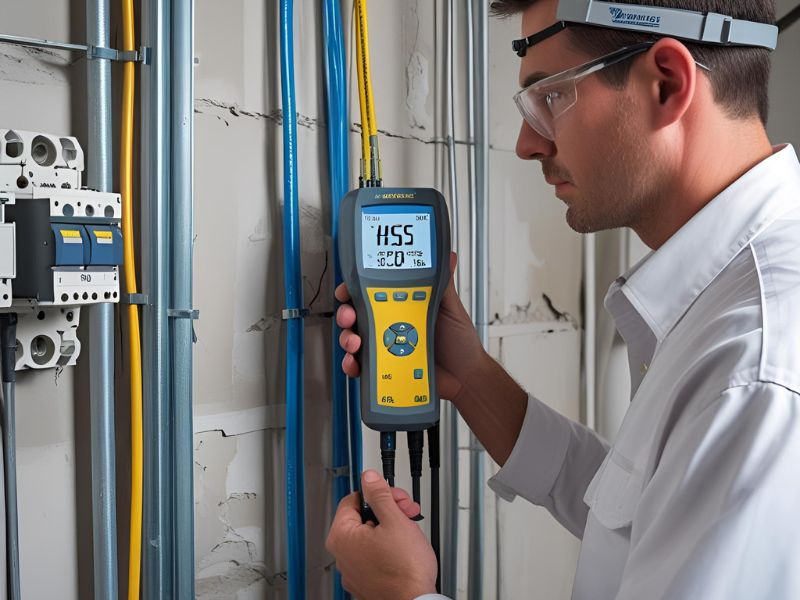
Let's get specific about how these systems actually work differently.
Lightning protection systems use the principle of preferential strike attachment. Air terminals are positioned to attract lightning strikes and provide a low-resistance path to ground through down conductors. The grounding system is designed to handle enormous lightning current, often tens of thousands of amperes.
Surge protective devices work on completely different principles. They contain components like metal oxide varistors that have variable resistance. These internal components work with other protective components to create a complete surge protection system. Under normal conditions, they present high resistance. When voltage spikes occur, their resistance drops dramatically, creating a low-resistance path for the surge current to flow to earth.
The speed difference is crucial too. Lightning protection systems don't need to react fast because they're creating a physical path. Surge protection devices must react in microseconds because voltage spikes happen lightning fast.
For industrial facilities and power stations, you might also need specialised antenna surge protectors to protect communication lines and overhead line connections. These are a combined type of surge arrester designed to protect equipment at specific voltage levels.
A lightning arrester can be part of external protection, but modern lightning arrester technology has evolved. Today's lightning arrester components work alongside other lightning arrester systems to provide comprehensive external protection. Some lightning arrester installations include multiple lightning arrester units for redundancy, ensuring that if one lightning arrester fails, other lightning arrester components continue working.
The 18th Edition of the IET Wiring Regulations (BS 7671), introduced in 2019, makes surge protection devices a legal requirement in many new installations. Specifically where there's risk to human life, risk to public services, or where equipment is sensitive, costly or essential for operations.
This isn't just bureaucracy. It's recognition that our electrical systems have fundamentally changed. We're not living in the 1950s anymore. Modern homes and businesses are packed with electronics that cost thousands to replace. Naturally, this raises the question: is lightning protection a legal requirement in these settings?
For commercial properties, the regulations are even stricter. If you're running a business that depends on electronic systems, surge protection isn't optional anymore.
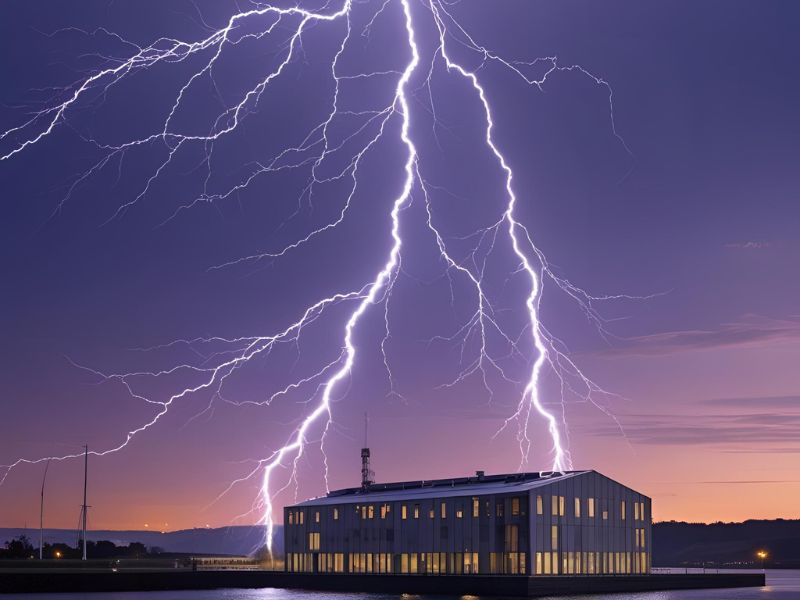
Let me paint you some pictures from our experience.
Scenario 1: Lightning strikes a factory building. The external lightning protection system works perfectly, conducting the strike safely to ground. But the electrical surge travels through the power cables and destroys thousands of pounds worth of automation systems and associated equipment. The building is fine. The business is crippled.
Scenario 2: No lightning anywhere near the property. But the industrial washing machines in the basement create voltage spikes every time they cycle. Over months, these transient voltages gradually damage sensitive electronic equipment throughout the building. Computers start crashing. The alarm system becomes unreliable. CCTV footage gets corrupted.
Both scenarios need different solutions. External lightning protection for scenario one. Surge protection devices for both. The first scenario shows why you need to protect electrical systems even when your building structure has protection. The second shows why modern properties need surge protection even without direct lightning strikes.
Installing lightning protection systems requires specialists who understand structural engineering, electrical engineering, and safety regulations. We're talking about roof work, earthing systems, and calculations about strike probabilities.
Surge protective device installation requires electrical contractors who understand your electrical installation, load characteristics, and the nominal discharge current requirements for your specific setup. These devices need to be correctly sized and positioned in your sub distribution boards.
Maintenance is different too. Lightning protection systems need annual visual inspections and periodic electrical testing of the grounding system. At this point, many building owners ask: how often should lightning protection be tested? The answer depends on risk assessments, but regular testing is essential for long-term reliability. A surge protective device needs regular checking to ensure they haven't been damaged by previous surge events.
Modern properties often need both air terminals on the roof and surge protective devices inside to protect equipment properly. Data centers and network infrastructure especially need this combined approach.
Here's the money talk. External lightning protection systems are typically more expensive upfront, especially for large commercial buildings. You're looking at structural modifications, specialist materials, and complex installation. — which is why many property owners ask, how much does lightning protection installation cost in the UK?
Surge protection devices are generally less expensive to install but need more strategic thinking. You need devices at multiple levels of your electrical installation for proper protection. The cost adds up, but it's still typically much less than replacing all your damaged equipment after a surge event.
For domestic properties, surge protection is often the more practical starting point. Most homes don't need full external lightning protection unless they're particularly exposed or in high-risk areas.
Commercial properties usually need both systems. The potential losses from either structural damage or electronic equipment failure are too high to ignore.

The decision isn't usually either/or. It's about understanding what risks you face and what you're trying to protect.
If you're protecting a data center, network infrastructure, or any business that depends on electronic systems, surge protection devices are non-negotiable. The cost of downtime from damaged equipment far exceeds the cost of proper surge protection.
If you have a tall building, exposed location, or structure that could suffer serious damage from a direct strike, external lightning protection is essential.
Most modern properties benefit from both systems because they protect against different threats. Lightning protection keeps your building standing. Surge protection keeps your business running.
You might also need to protect equipment connected to telephone lines, cable tv systems, or overhead line connections. Each type of equipment needs appropriate surge protective components matched to the voltage level and nominal discharge current of your installation.
Here's what we tell every client: don't guess. The risks are too high and the regulations too complex to wing it.
A proper assessment looks at your location, building height, local lightning density, electrical installation characteristics, and the value of equipment you're protecting. It considers both direct strikes and indirect effects.
We need to protect electrical installations from transient overvoltages that can travel safely through cables and damage everything from washing machines to sophisticated automation systems. Whether that's a simple home setup or complex industrial facilities with multiple power stations.
At Lightning Protection Testing UK, we see the consequences when people make assumptions about their protection needs. Sometimes they over-specify and waste money. More often, they under-specify and regret it when something goes wrong.
The key is understanding that different surge protective device spd systems handle different types of protection. External lightning arrester systems protect structures, while internal surge protective device spd technology protects your valuable equipment from various sources of transient overvoltages.
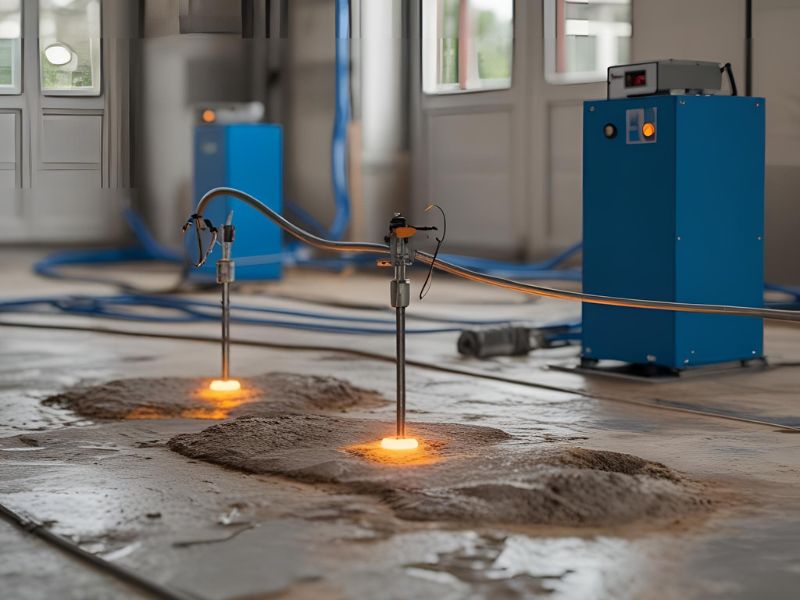
Understanding the difference between surge protection devices and lightning protection systems is just the first step. The next step is getting professional advice specific to your property and situation.
Don't wait until after storm season to think about this. Don't wait until you've had your first major equipment failure. Get ahead of the problem.
Contact Lightning Protection Testing UK today for a free quote on surge protection and lightning protection solutions tailored to your property. We'll assess your specific risks and recommend the right combination of protection systems to keep both your building and your valuable electronic equipment safe.